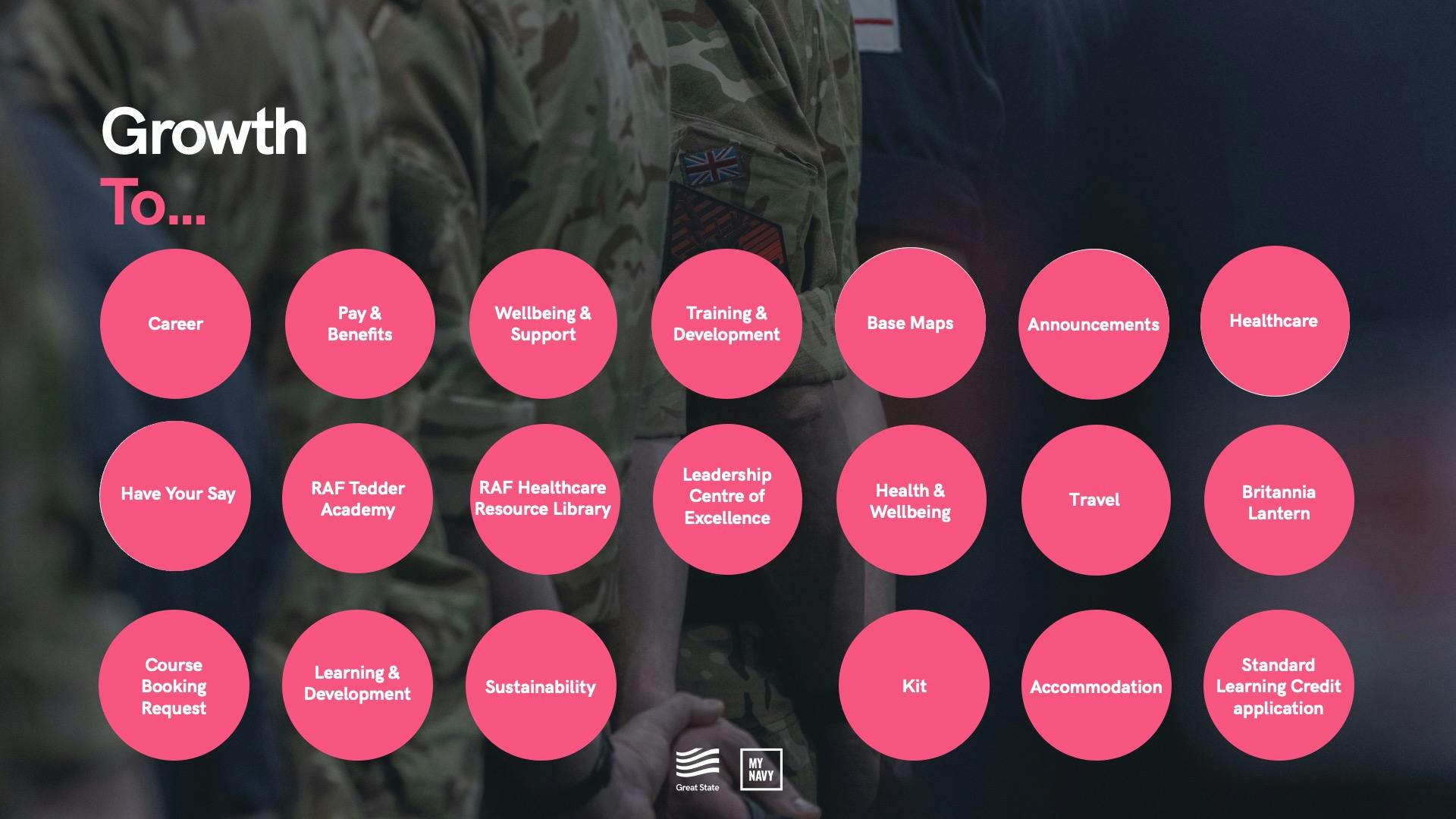MyNavy: Using Umbraco in the Enterprise
Last month at CodeGarden, the annual Umbraco conference, CTO Filip Bech-Larsen talked in his keynote about different flavours of Digital Experience Platforms (DXP):
- Composable DXP: where you create your platform by stitching together (or composing) best of breed SaaS solutions.
- Platform DXP: where you integrate your marketing products directly into the platform. These could be first or third-party products, but the administration is all contained within the Umbraco platform.
- Hybrid DXP: the cross-over point in the middle, where some services are provided inside the platform, and some are provided by SaaS solutions outside.
While other CMS systems tend to steer towards either the composable or platform options – Filip was keen to point out that Umbraco was a great fit across all three.
This wasn’t really news to us because we use Umbraco regularly to deliver complex solutions – we have long known that its flexibility and ease of use make it the ideal platform to host your enterprise integrations – no matter where the services live.
MyNavy as an enterprise solution
MyNavy is a great example of an enterprise solution built around Umbraco. It’s an employee empowerment platform designed to help enhance the lived experience of serving personnel in the Royal Navy, by providing them access to information and IT services from their personal electronic devices, anywhere in the world.
It’s been so successful that over the last three years it has grown into an application that is accessed by 65% of serving personnel on a regular basis.
When we first started developing MyNavy, it featured only three areas covering basic payroll, career development information, and content relating to health and wellbeing. Today, it contains services from over seventeen different product areas, covering everything from healthcare vaccination reminders to interactive base maps, each with their own dedicated product owner from the relevant department.

Due to the strict governance and security requirements of computer systems within the Ministry of Defence, all the enterprise integrations within MyNavy are based on the Platform DXP model – ultimately making Umbraco the ‘Control Centre’ from which everything in MyNavy is managed.
Identity and Authentication
MyNavy contains a large amount of secure and personal information, so it’s vital that all access is protected and authorised. To do this we had to integrate our modern web frameworks with the legacy protocols supported by the Ministry of Defence’s external facing authentication platform. Our identity integration also provides access for non-military personnel to conduct development and testing using pre-defined mock personas.
User Communicator Role
One of MyNavy’s most-valued features is the announcements, which include everything from Fleet wide communications down to unit level news. As MyNavy is used by over 64% of the Royal Navy regularly, the management of the announcements would overwhelm a centralised comms office.
To combat this problem, we created the User Communicator Role, which allows us to delegate fine-grained responsibility for communications to users within each Unit, Base, or Group. This reduces operational load on the Communications team while ensuring that user communicators can only publish announcements to the appropriate audiences.
Ucommerce
One of the services launched in 2022 was an Online Clothing Store – designed to provide a click-and-collect service for personnel to replace or requisition items of uniform. We used UCommerce to power our e-commerce area, integrating it with our Umbraco back-office and hosting it in our secure hosting environment alongside core Umbraco applications. This integration has proven so successful that some units have mandated that all orders be processed through the system to reduce time wasted on unnecessary travel to stores, and to ensure personnel receive up-to-date notifications about their order status.
Travel
The travel product area (still currently in limited trial) reduces the administrative cost of booking duty travel and accommodation for serving personnel. It allows users to create a travel itinerary electronically including requesting military coaches and minibuses, as well as integrations with Google Places API to find Hotels, Google Maps Directions API to provide directions and travel time estimates, and National Rail Enquiries API to search for train journeys. The itinerary is then sent to the travel cell who can book the services directly, rather than having to identify the facilities needed first.
Much more to come
At this year’s CodeGarden, myself and Cdr Morgan Long (the previous Product Owner of MyNavy) gave a talk on the evolution of MyNavy in which we described in more detail the technical and business advantages of building an enterprise solution on an open-source CMS like Umbraco. MyNavy has already been rolled out and the serving personnel in the RAF. MyNavy continues to iterate and expand, with each new addition to its functionality driven by the needs of personnel. and there are ambitions to take the application even further.
If you’d like to learn more about how we did it, then please do get in contact and I’ll be happy to help.